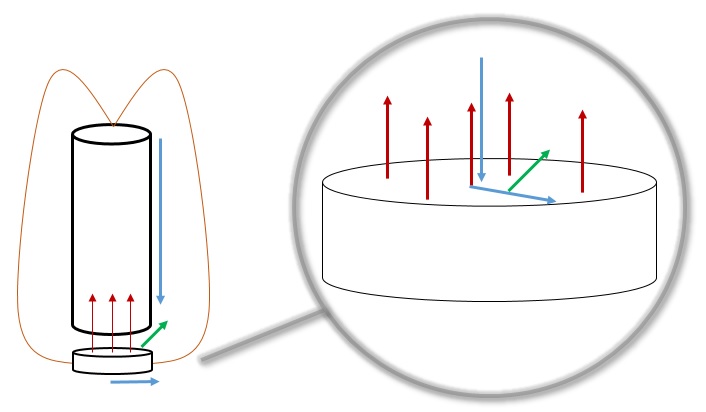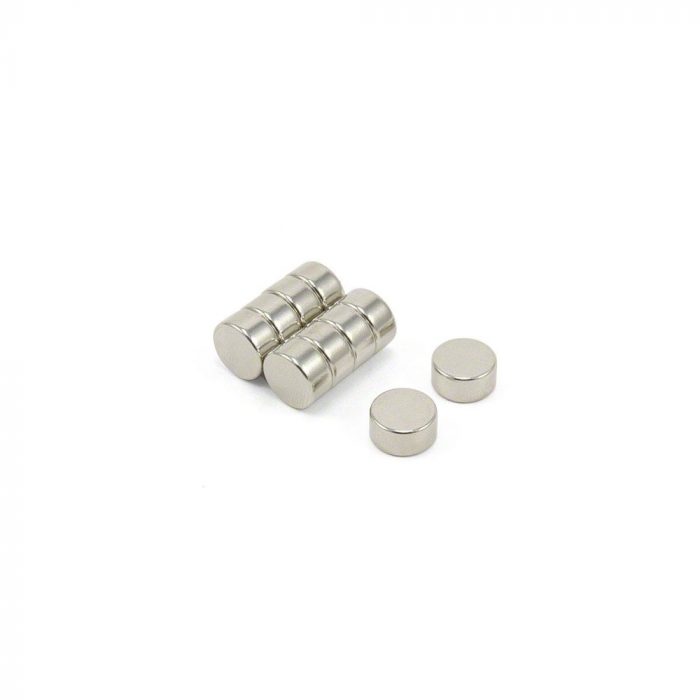We’ve already established that a homopolar motor is a type of electric motor, specifically, it is one that uses direct current to power rotational movement, such as that generated by a battery. It was the first type ever built and demonstrated by Michael Faraday in 1821.
Although not the configuration Faraday used, homopolar motors can be made out of a single AA or C battery, a single neodymium disc magnet and a piece of copper wire.
They have two magnetic poles provided by the single permanent magnet that is used to produce the magnetic field, also required to generate rotational movement.
It is called a homopolar motor because, unlike conventional DC motors, the polarity of the magnetic field emitted by the conductor and the permanent magnets does not change. Let’s take a close look at how one works.
How Does A Homopolar Motor Work?
OK, we’re going to get scientific for this bit so make yourself a cuppa and bring your concentration face! A homopolar motor creates rotational movement because of what is known as the Lorentz force.
What’s happening is that the electrical current is flowing from the positive terminal of the battery to the negative and into the magnet. This current then flows from the centre of the magnet to the edge where the wire connects, it travels up the wire back to the positive terminal of the battery and the circuit is complete.
But how does this generate movement you may well ask?
Well, the key is the direction of the current and the magnetic field produced by the permanent magnet. We’ve put together the below diagram to support the explanation.
The direction of the magnetic field is demonstrated by the red arrows and the direction of the current is shown by the blue arrows.
As the current travels perpendicular to the magnetic field, a Lorentz Force is exerted on the conductor (the wire) which again is perpendicular to both the direction of the magnetic field and the current, generating the spinning motion.
What Is A Homopolar Motor Used For?
In truth, they aren’t that practical at all.
Unfortunately, you will never generate enough power from a homopolar motor to power any domestic appliances but they are great fun to make and really useful for demonstrating the effects of electromagnetism and how electric motors work because high currents flow through the wire the battery runs out very quickly.
Also, the wire and battery can get very hot, so if you are going to make one for yourself, please handle it with care.
Fancy making one for yourself? We’ve got a couple of tips:
- The wire can be bent to form any shape but one end must be touching the positive terminal of the battery and the other must be in contact with the neodymium magnet.
- The key is to make a shape with the wire that allows it to balance properly, if it is unbalanced it will soon fall off the battery as it begins to spin.
- Please be careful if making your own DIY homopolar motor as the wire and battery can become very hot.
- Neodymium magnets are the strongest in the world that’s why you will often see a neodymium disc magnet used in this configuration.
The stronger the magnet, the quicker the wire will spin. If using an AA battery to make a homopolar motor, the ideal magnet to use is a 12mm diameter x 6mm thick neodymium disc magnet.




